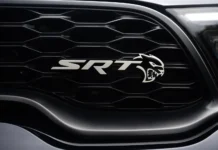
Over 620 miles of range? That’s what you’re looking at here in the Vision EQXX.
Mercedes-Benz has been teasing their next futuristic concept for CES 2022, and now it’s officially here. Not only that, but now we can actually mull over some numbers on what the automaker is calling their most efficient car ever. The Vision EQXX is not a production model, but the technology on display here could well make its way into the next generation of its ‘EQ’ electric vehicle lineup.
Let’s start with the headline figure: 1,000 kilometers. Mercedes-Benz made this goal a core tenet of the Vision EQXX, in that the car would have a workable driving range of just over 620 miles. Mind you, the company does stipulate that figure as preliminary, based on digital simulations. It has not undergone any official homologation yet, but even on its face that sort of range would move the bar for efficiency, even among today’s longest-range EVs like the Tesla Model S and Lucid Air. The car, Mercedes claims, uses less than 10 kW of energy to travel 100 kilometers, working out to 6 miles per each kilowatt of energy in the battery pack.
You might think the Mercedes-Benz Vision EQXX packs a massive, massive battery to achieve that kind of range — but that’s not the case. The pack has slightly less then 100 kW of usable energy, so the car weighs in around a fairly reasonable 3,858 pounds (about half a ton lighter than a Model S). That pack is also 50% smaller in volume and 30% lighter than that in an EQS, despite having similar capacity. Developed with the Mercedes-AMG Formula One team, the high-density energy pack brings improvements to the battery chemistry and high-strength, lightweight materials to help hit that range goal.
Another key figure? Aerodynamic drag. The shape of the Vision EQXX has a drag coefficient of just 0.17, beaten even the EQS’ 0.20 figure. The company points out that every 0.01 reduction to that number improves range by 2.5%.
We’re talking efficient, not super powerful
The 620+ mile range is an impressive figure, but the Mercedes-Benz Vision EQXX demonstrates the adage of performance versus efficiency. The single-motor drive unit puts out 150 kW (201 horsepower), so we’re not talking about neck-snapping acceleration here. Still, Mercedes says the drivetrain achieves a remarkable 95% efficiency in transferring energy to the wheels.
Beyond the powertrain layout, the automaker also thought about structure and materials to help keep the electric concept’s weight down. Part of that process comes down to the “BIONEQXX” aluminum casting for the rear floor area, as is used in the EQS. The casting more or less has a web-like appearance, with material only at critical and necessary locations where a load is exerted. Then, Mercedes fills in the gaps with 42 3D-printed plastic patches so water or dirt can’t enter the car, saving 15 to 20% of the weight over a traditional aluminum casting.

The EQXX’s interior packs a super-sharp 8K display
Efficiency is a major factor with the interior as well. The 47.5-inch mini-LED display, for example, has more than 3,000 local dimming zones, meaning it only draws power in specific parts of the screen that are lit up at any given moment, rather than consuming electricity across the whole thing. Mercedes also honed in on sustainable materials as well, including materials crafted from bamboo fibers for the rear carpets, a cactus fiber-based leather alternative called Deserttex, as well as recycled PET bottles and plastic substitutes throughout the interior.
As for when we’ll actually see any of these elements go into production, we should see some of it in the near future. Again, perhaps not with this exact car, but Mercedes is using this as a design study to see where it can produce more efficient, environmentally conscious electric vehicles over the coming years.



























